New paper published in Journal of Environmental Management
Sat, 01/20/2018 - 00:00 — admin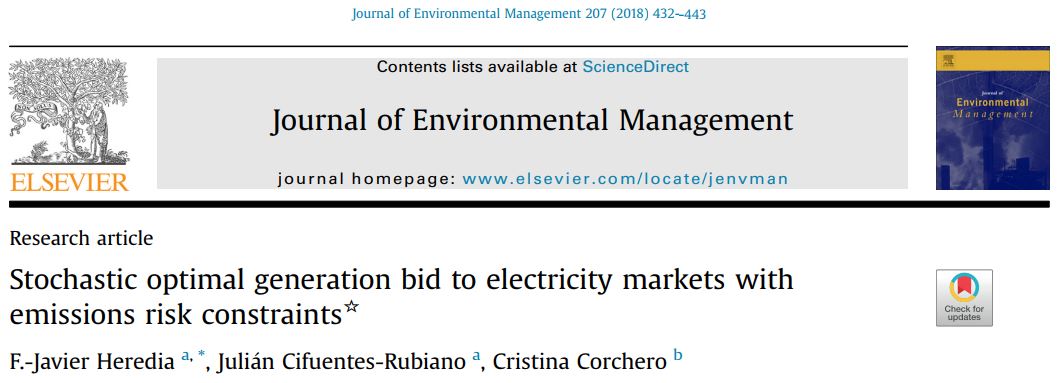 The paper Stochastic optimal generation bid to electricity markets with emissions risk constraints has been published in the Journal of Environmental Management , Elsevier. This work investigates the influence of the emissions reduction plan and the incorporation of the medium-term derivative commitments in the optimal generation bidding strategy for the day-ahead electricity market. To address emission limitations, we have extended some of the standard risk management methodologies developed for financial markets, such as Value-at-Risk (VaR) and Conditional Value-at-Risk (CVaR), thus leading to the new concept of Conditional Emission at Risk (CEaR). We analyze the economic implications for a GenCo that includes the environmental restrictions of this National Plan as well as the NERP's effects on the expected profits and the optimal generation bid. Preprint available at http://hdl.handle.net/2117/114024.
The paper Stochastic optimal generation bid to electricity markets with emissions risk constraints has been published in the Journal of Environmental Management , Elsevier. This work investigates the influence of the emissions reduction plan and the incorporation of the medium-term derivative commitments in the optimal generation bidding strategy for the day-ahead electricity market. To address emission limitations, we have extended some of the standard risk management methodologies developed for financial markets, such as Value-at-Risk (VaR) and Conditional Value-at-Risk (CVaR), thus leading to the new concept of Conditional Emission at Risk (CEaR). We analyze the economic implications for a GenCo that includes the environmental restrictions of this National Plan as well as the NERP's effects on the expected profits and the optimal generation bid. Preprint available at http://hdl.handle.net/2117/114024.
A new MSc Thesis on vehicle routing in collaboration with Accenture.
Tue, 01/09/2018 - 00:00 — admin
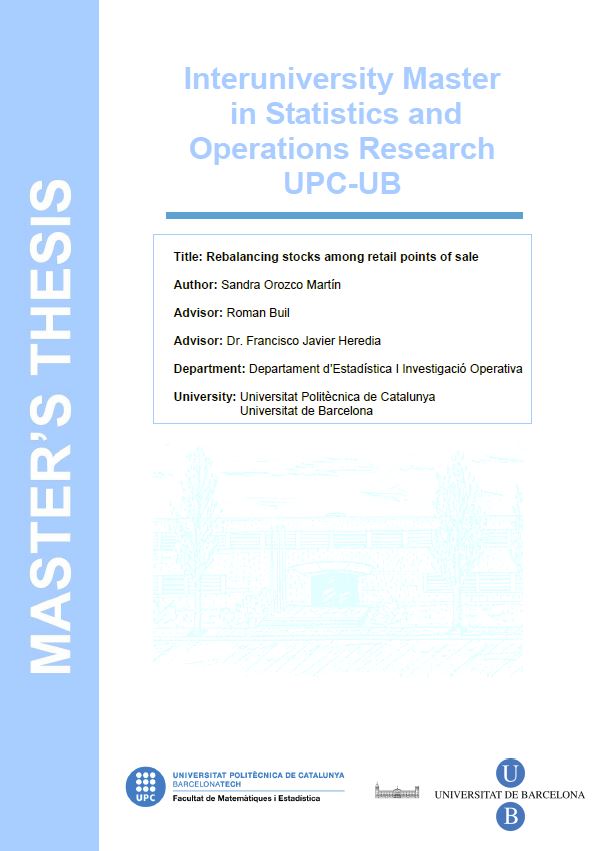 Sandra Orozco, a former student of the Interuniversity Master in Statistics and Operations Research UPC-UB , presented the MSc Thesis Rebalancing stocks among retail points of sale . She analysed a variant of the Vehicle Routing Problem where products are distributed from a depot to multiple retail stores using capacitated vehicles and not only the transportation cost but also the lost sales resulting from stock-outs at each location are minimized. Two exact formulations are proposed and solved both woth exact methods and metaheuristics. Moreover, an end-to-end solution is developed through the implementation of a visualization tool in R Shiny, which uses MySQL databases and shell calls to AMPL to simulate the process of a whole day. This thesis has been advised by myself, prof. Elena Fernéndez, from my same department, and Roman Buil, from Accenture.
Sandra Orozco, a former student of the Interuniversity Master in Statistics and Operations Research UPC-UB , presented the MSc Thesis Rebalancing stocks among retail points of sale . She analysed a variant of the Vehicle Routing Problem where products are distributed from a depot to multiple retail stores using capacitated vehicles and not only the transportation cost but also the lost sales resulting from stock-outs at each location are minimized. Two exact formulations are proposed and solved both woth exact methods and metaheuristics. Moreover, an end-to-end solution is developed through the implementation of a visualization tool in R Shiny, which uses MySQL databases and shell calls to AMPL to simulate the process of a whole day. This thesis has been advised by myself, prof. Elena Fernéndez, from my same department, and Roman Buil, from Accenture.
Contribution to the 4th International Conference on Optimization Methods and Software 2017, La Havana.
Sat, 12/16/2017 - 00:00 — admin
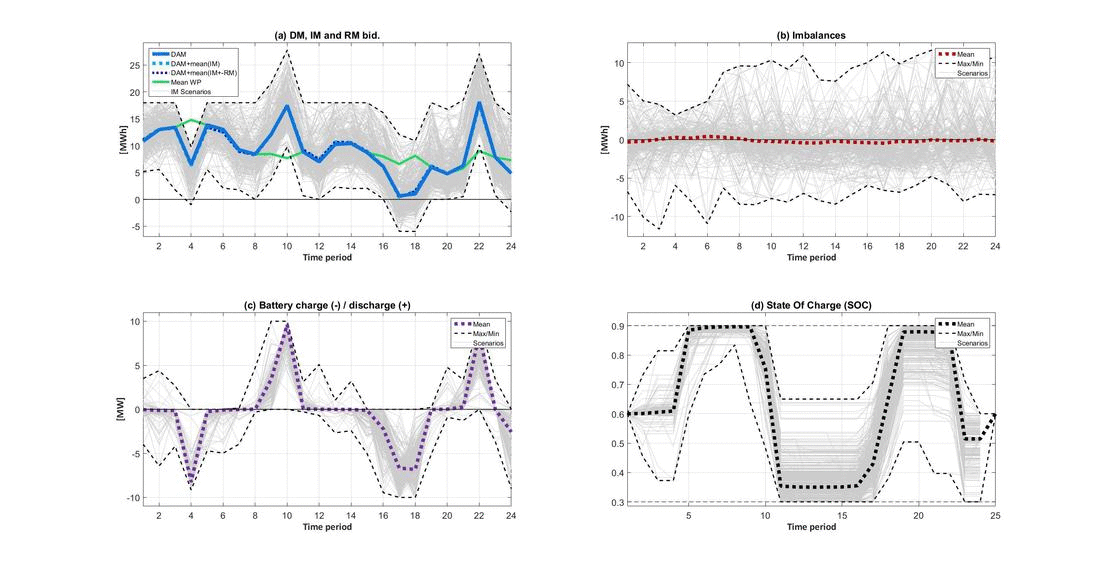 Last december I was invited to the 4th International Conference on Optimization Methods and Software 2017 that was held in La Havana, to present the study A Multistage Stochastic Programming Model for the Optimal Bid of Wind-BESS Virtual Power Plants to Electricity Markets. This study was developed in collaboration with Marlyn Cuadrado and Josep Anton Sánchez, from my same department in the UPC, and is a partial result of the research project FOWGEM. This study is a follow up of the previous work presented in the WindFarms 2017 Conference extended with a new methodology to treat the uncertainty, based in forecasting models, and the study of the quality of the stochastic solution through the Value of the Stochastic Solution. In the animated graph you can observe how the the probability distribution of several recourse variables (optimal bid, imbalances, charge/discharge and SOC) evolves along five working days.
Last december I was invited to the 4th International Conference on Optimization Methods and Software 2017 that was held in La Havana, to present the study A Multistage Stochastic Programming Model for the Optimal Bid of Wind-BESS Virtual Power Plants to Electricity Markets. This study was developed in collaboration with Marlyn Cuadrado and Josep Anton Sánchez, from my same department in the UPC, and is a partial result of the research project FOWGEM. This study is a follow up of the previous work presented in the WindFarms 2017 Conference extended with a new methodology to treat the uncertainty, based in forecasting models, and the study of the quality of the stochastic solution through the Value of the Stochastic Solution. In the animated graph you can observe how the the probability distribution of several recourse variables (optimal bid, imbalances, charge/discharge and SOC) evolves along five working days.
New MSc Thesis on optimal design of hybrid AC-DC offshore wind power plant topology through MIP.
Thu, 10/12/2017 - 23:00 — admin
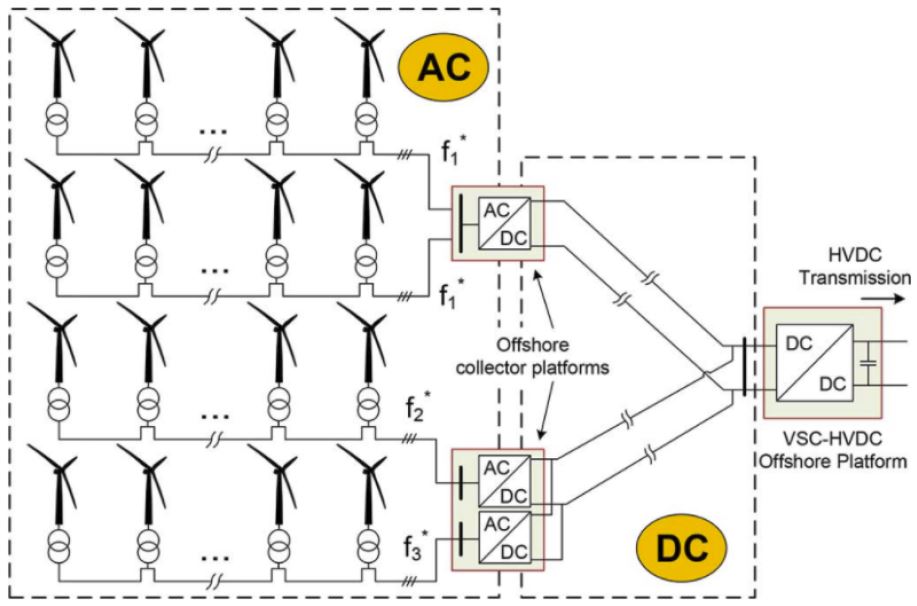 The MSc Thesis entitled A MIP formulation of a Hybrid AC-DC offshore wind power plant topology has been defended by the student Josep Homs, from the Interuniversity Master in Statistics and Operations Research UPC-UB. This work has been advised by myself in collaboration with Cristina Corchero and Lucia Igualada from the Catalonia Institute for Energy Research. This thesis offers a simple, compact and small-sized MIP optimization model that models a hybrid off-shore wind farm design. The model has been tested with small off-sshore wind farms with 24 turbines and 7 platforms locations that may house up to 28 converters. The optimal solution has been obtained within 162 seconds, proving the great potential of the model. Next, the algorithm has been tested with a large realistic case involving 80 turbines and 10 platform locations that may house up to 40 power converters. In this case, the algorithm is able to find a feasible solution 10 milions EUR cheaper than standard current real-world layout designs in just six hours.
The MSc Thesis entitled A MIP formulation of a Hybrid AC-DC offshore wind power plant topology has been defended by the student Josep Homs, from the Interuniversity Master in Statistics and Operations Research UPC-UB. This work has been advised by myself in collaboration with Cristina Corchero and Lucia Igualada from the Catalonia Institute for Energy Research. This thesis offers a simple, compact and small-sized MIP optimization model that models a hybrid off-shore wind farm design. The model has been tested with small off-sshore wind farms with 24 turbines and 7 platforms locations that may house up to 28 converters. The optimal solution has been obtained within 162 seconds, proving the great potential of the model. Next, the algorithm has been tested with a large realistic case involving 80 turbines and 10 platform locations that may house up to 40 power converters. In this case, the algorithm is able to find a feasible solution 10 milions EUR cheaper than standard current real-world layout designs in just six hours.
A new contribution on incorporating additive manufacturing to product supply chains
Thu, 08/31/2017 - 23:00 — admin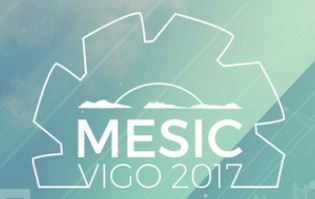 A new result of the research project Digitalizing Supply Chain Strategy with 3D Printing with Accenture TechLabs and Center for Analytics has been presented in the Manufacturing Engineering Society International Conference 2017 , MESIC 2017. The study compares different possible production strategies for a product (via conventional technologies and Additive Manufacturing) and assesses the degree of postponement that it would be recommended in order to meet a certain demand distribution. The problem solving is calculated by a program containing a stochastic mathematical model which incorporates extensive information on costs and lead times for the required manufacturing operations. This study was published in Procedia Manufacturing.
A new result of the research project Digitalizing Supply Chain Strategy with 3D Printing with Accenture TechLabs and Center for Analytics has been presented in the Manufacturing Engineering Society International Conference 2017 , MESIC 2017. The study compares different possible production strategies for a product (via conventional technologies and Additive Manufacturing) and assesses the degree of postponement that it would be recommended in order to meet a certain demand distribution. The problem solving is calculated by a program containing a stochastic mathematical model which incorporates extensive information on costs and lead times for the required manufacturing operations. This study was published in Procedia Manufacturing.
BSc Thesis on tight MILP formulation of the unit committment problem
Wed, 07/19/2017 - 11:56 — admin
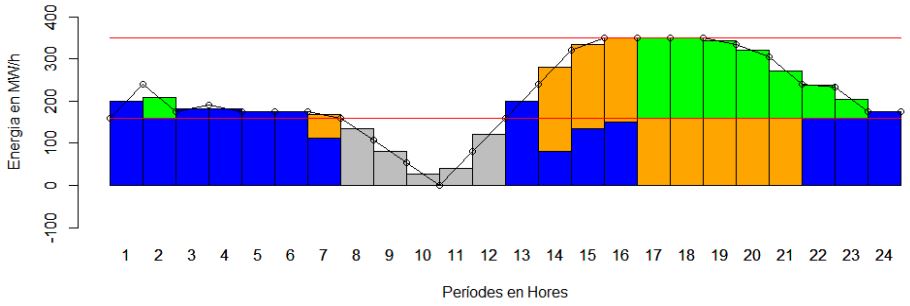 L'alumne del grau de matemàtiques de l'FME Jordan Escandell ha llegit el treball fi de grau Caracterització de Formulacions Fortes del Problema Unit Commitment. Aquest projecte abordava la caracterització de formulacions fortes del problema Unit Commitment a partir de l'estudi de les diferents desigualtats proposades pels diferents autors així com la seva adaptació i possible millora en la modelització de certs problemes reals de mercats elèctrics. Els models d'optimització matemàtica obtinguts s'han implementat computacionalment i aplicat a la resolució de problemes reals d'oferta òptima a merctas elèctrics.
L'alumne del grau de matemàtiques de l'FME Jordan Escandell ha llegit el treball fi de grau Caracterització de Formulacions Fortes del Problema Unit Commitment. Aquest projecte abordava la caracterització de formulacions fortes del problema Unit Commitment a partir de l'estudi de les diferents desigualtats proposades pels diferents autors així com la seva adaptació i possible millora en la modelització de certs problemes reals de mercats elèctrics. Els models d'optimització matemàtica obtinguts s'han implementat computacionalment i aplicat a la resolució de problemes reals d'oferta òptima a merctas elèctrics.
A multistage stochastic programming model for the optimal management of wind-BESS virtual power plants
Thu, 06/01/2017 - 16:26 — admin
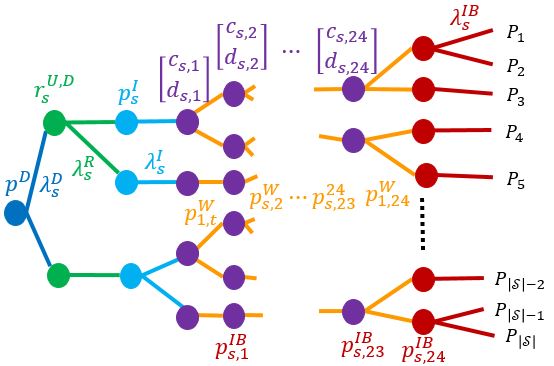 A new multi-stage stochastic programming model for the optimal bid of a wind producer both in spot and
A new multi-stage stochastic programming model for the optimal bid of a wind producer both in spot and
ancillary services electricity markets has been presented inthe conference WindFarms 2017. We analyse the effect of the BESS and the
reserve market to the optimal bidding strategies of the VPP with real data
from the Iberian Electricity Market Operator (OMIE) and wind production data from Gas Natual - Fenosa. The complete presentation can be downloaded from here
Research project: Strategical models in supply chain design through mathematical optimization.
Thu, 12/01/2016 - 16:54 — admin
 A new three-years research project hs been settled with Accenture Technology Labs (Silicon Valley) and Accenture Analytics Innovation Center (Barcelona). The aim of the project Strategical models in supply chain design through mathematical optimization is the optimal design of supply chains that includes the speculation-postponement paradigm though stochastic programming, recovering some of the contributions of the former previous collaboration during the project Digitalizing Supply Chain Strategy with 3D Printing.
A new three-years research project hs been settled with Accenture Technology Labs (Silicon Valley) and Accenture Analytics Innovation Center (Barcelona). The aim of the project Strategical models in supply chain design through mathematical optimization is the optimal design of supply chains that includes the speculation-postponement paradigm though stochastic programming, recovering some of the contributions of the former previous collaboration during the project Digitalizing Supply Chain Strategy with 3D Printing.
Contribution to CILOG2016, Congreso Internacional de Logística y Cadena de Suministro 2016
Tue, 11/01/2016 - 16:21 — admin
 El estudio Optimización de costos logísticos: Un caso de estudio de una empresa de plásticos se presentó el pasado octubre 2016 en el Congreso Internacional de Logística y Cadena de Suministro 2016 por Claudia Morales Carreón. El trabajo fué realizado durante la estancia de Claudia en el grupo de investigación GNOM. En este trabajo se presenta un estudio de una empresa ubicada en la región, la cual incurre actualmente en altos costos logísticos en su proceso de importación de materia prima desde Asia hasta su filial en Monterrey, N.L. Por medio de un modelo matemático entero mixto se consigue minimizar los costos antes mencionados. El modelo tiene las siguientes características: es de ubicación de facilidades en cuatro etapas, multiproducto, multiperiodo y multitransporte.
El estudio Optimización de costos logísticos: Un caso de estudio de una empresa de plásticos se presentó el pasado octubre 2016 en el Congreso Internacional de Logística y Cadena de Suministro 2016 por Claudia Morales Carreón. El trabajo fué realizado durante la estancia de Claudia en el grupo de investigación GNOM. En este trabajo se presenta un estudio de una empresa ubicada en la región, la cual incurre actualmente en altos costos logísticos en su proceso de importación de materia prima desde Asia hasta su filial en Monterrey, N.L. Por medio de un modelo matemático entero mixto se consigue minimizar los costos antes mencionados. El modelo tiene las siguientes características: es de ubicación de facilidades en cuatro etapas, multiproducto, multiperiodo y multitransporte.
MSc Thesis on distributed battery energy storage systems in energy retail markets
Tue, 09/27/2016 - 09:49 — admin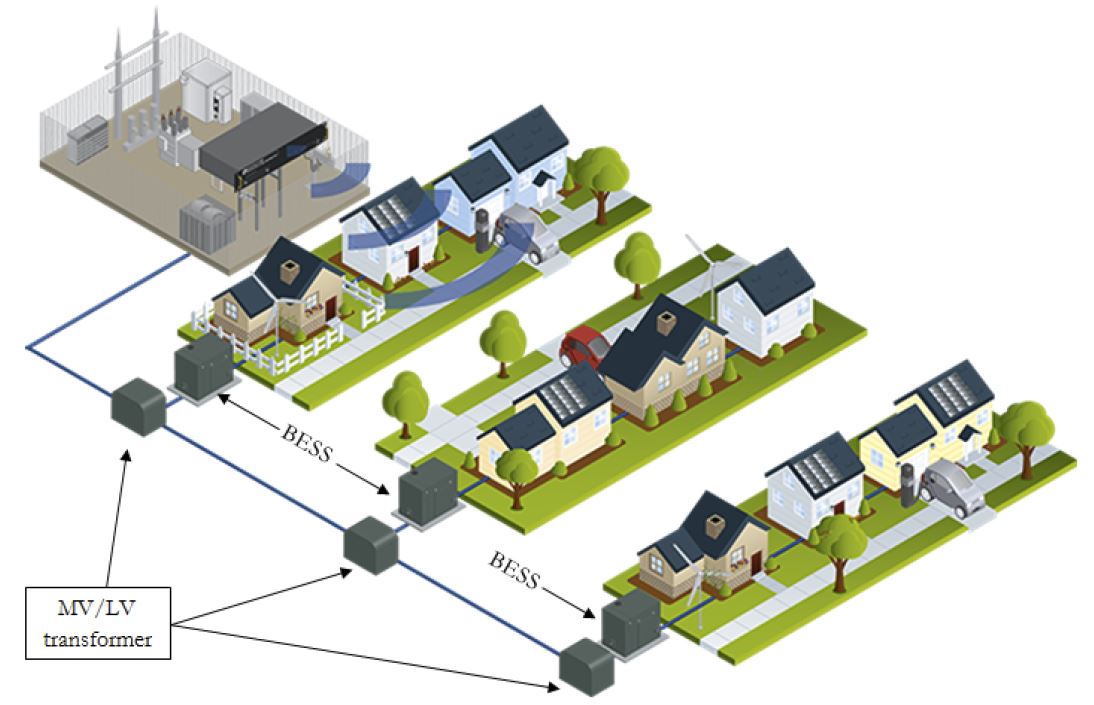 Last September 16 2016 Mr Maksims Sisovs, student of the "KIC InnoEnergy" Master of Science in Smart Electrical Networks and Systems defended their MSc Thesis A Study on Feasibility of the Distributed Battery Energy Storage Systems in Spanish Retail Electricity Market. This project was proposed by Minsait, an advanced technological consultancy from the Indra's group, and developed under my academical supervision. The objective of the study was to analyse the business opportunity of distributed battery energy storage systems deployed in residential neighbourhoods (LiIon batteries, both static devices and mobile through electrical vehicle). The methodology applied was based on the adaptation of the mathematical optimization model presented in the paper Economic analysis of battery electric storage systems operating in electricity markets (Heredia et al. 2015) to the data of the smart meters deployed by several electrical utilities (more than 20 millions of consumption readings). This work deserved the maximum grade, A+ with honours.
Last September 16 2016 Mr Maksims Sisovs, student of the "KIC InnoEnergy" Master of Science in Smart Electrical Networks and Systems defended their MSc Thesis A Study on Feasibility of the Distributed Battery Energy Storage Systems in Spanish Retail Electricity Market. This project was proposed by Minsait, an advanced technological consultancy from the Indra's group, and developed under my academical supervision. The objective of the study was to analyse the business opportunity of distributed battery energy storage systems deployed in residential neighbourhoods (LiIon batteries, both static devices and mobile through electrical vehicle). The methodology applied was based on the adaptation of the mathematical optimization model presented in the paper Economic analysis of battery electric storage systems operating in electricity markets (Heredia et al. 2015) to the data of the smart meters deployed by several electrical utilities (more than 20 millions of consumption readings). This work deserved the maximum grade, A+ with honours.
